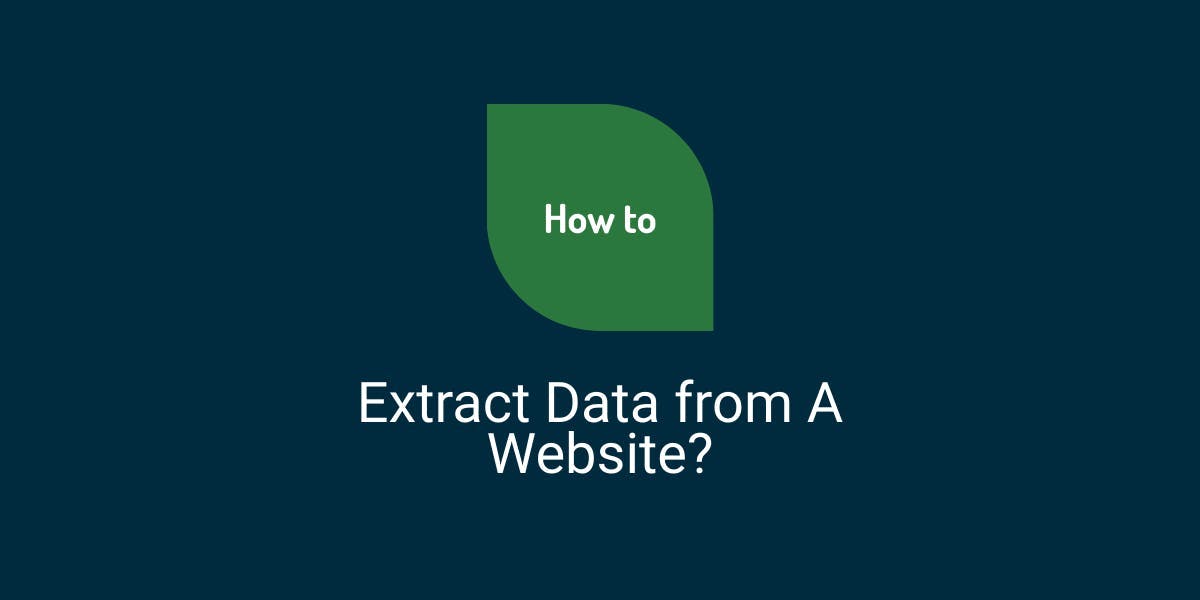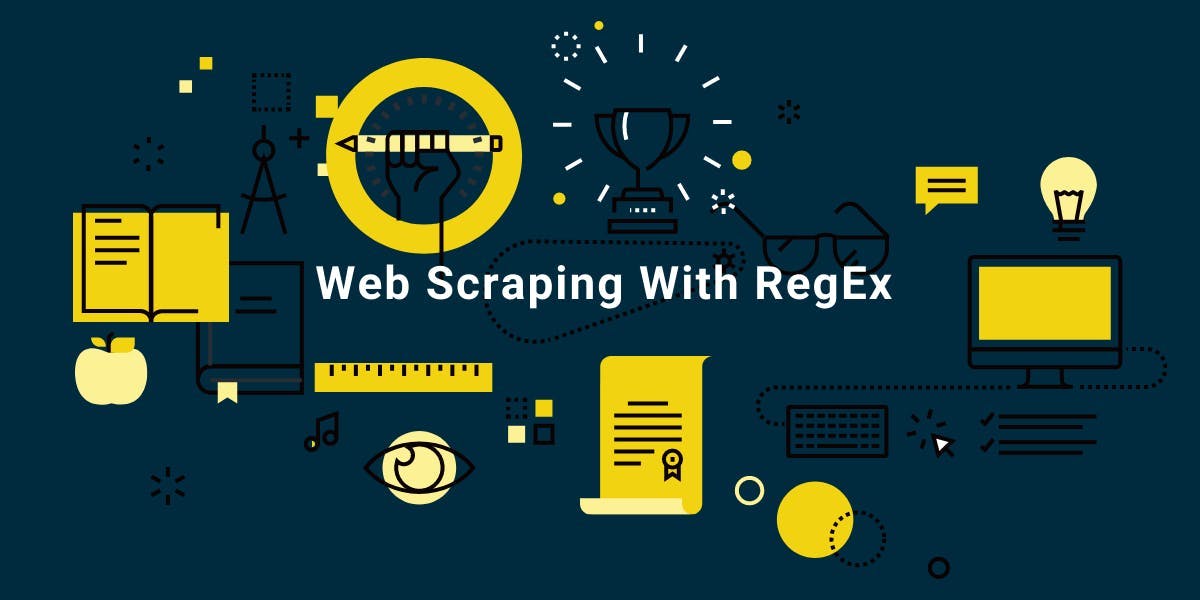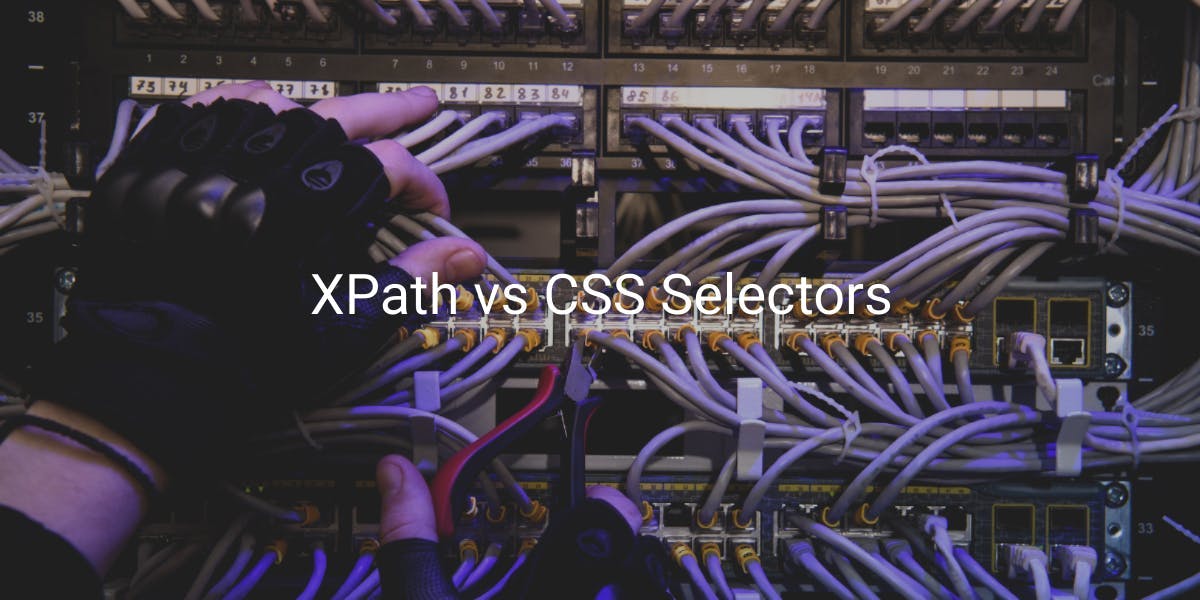How to Extract Data from A Website?
Flipnode on May 09 2023

In today's business landscape, prioritizing data-driven decision-making is crucial for many companies. They continuously track, monitor, and record relevant data to drive their choices. Fortunately, websites store a plethora of public data on their servers that can help businesses stay competitive in the market.
Nowadays, it's commonplace for companies to extract data for their business needs. However, before incorporating it into your day-to-day operations, it's crucial to become well-informed about the process. That's why in this article, we will explore the ins and outs of website data extraction, including its main challenges, and introduce you to several solutions that can assist you as you embark on your data scraping journey.
Extracting data: how it works
If you're not particularly tech-savvy, web data extraction may seem like a daunting and complex task. However, it's actually a fairly straightforward process.
The process of extracting data from websites is commonly referred to as web scraping or web harvesting. It typically involves using a bot or web crawler to automatically extract data. Web scraping is sometimes confused with web crawling.
In this article, we will walk you through the entire process of web data extraction, so you can fully understand how it works.
What makes data extraction possible
Currently, HTML is the most common format of the data that we scrape. This text-based mark-up language uses various components such as tags like <p>, <table>, and <title> to define the structure of a website's content. With the help of scripts, developers can extract data from any type of data structure.
Building data extraction scripts
Skilled programmers who are proficient in programming languages such as Python can create scraper bots, which are used for web data extraction. Python is a popular choice due to its extensive libraries, ease of use, and active community. These bots can automatically extract data by sending a request to a server, visiting a specific URL, traversing each pre-defined page, HTML tag, and component, and then extracting data from them.
Developing various data crawling patterns
Customized scripts can be created to extract data from specific HTML elements only. The data extraction process should be aligned with the business goals and objectives. There is no need to extract all data when you can focus on the specific data required. This approach also reduces the strain on servers, and storage space requirements, and makes data processing simpler.
Setting up the server environment
To ensure that your web scrapers run continuously, it is necessary to have a server. Therefore, the next stage in this process involves either investing in server infrastructure or renting servers from a reputable company. Servers are essential because they enable you to run the scripts you've created around the clock and facilitate the recording and storage of data.
Ensuring there is enough storage space
Data extraction scripts produce data as output. For large-scale operations, a significant amount of storage capacity is required. Extracting data from several websites can lead to thousands of web pages. As the process is ongoing, the amount of data collected can be substantial. Therefore, it is crucial to ensure that there is sufficient storage space to support your web scraping operation.
Data processing
Parsing and structuring the acquired data is a crucial step in any data gathering process, as the data obtained is often in a raw format and can be difficult for humans to comprehend.
How to extract data from the web
Extracting public data from a webpage can be done in two ways: building an in-house tool or using a ready-to-use web scraping solution. Each option has its own advantages, and understanding them can help you make an informed decision on what best suits your business needs.
In-house solution
To create an in-house website data extractor, you will require a dedicated web scraping stack that includes the following components:
Proxies: Many websites display different content based on the location of the IP address. Depending on the location of your servers and targets, you may require a proxy from a different country. A large proxy pool can also help avoid IP blocks and CAPTCHAs.
Headless Browsers: More websites are using frontend frameworks such as Vue.js or React.js. These frameworks use backend APIs to fetch data and rendering to draw the DOM (Document Object Model). A regular HTML client will not render the JavaScript code, resulting in an empty page. Therefore, a headless browser is essential.
In order to develop an in-house web data extractor, you will need a dedicated web scraping stack that includes several components. These include:
Proxies: Many websites display content based on the IP address location, so you may need to use proxies to access content from different countries. A large pool of proxies can also help you avoid IP blocks and CAPTCHAs.
Headless browsers: Websites using frontend frameworks like Vue.js or React.js require backend APIs to fetch data and render to draw the DOM. Without a headless browser, you may end up with an empty page. Headless browsers like Selenium, Puppeteer, and Playwright are popular APIs used for this purpose.
Extraction rules: These are rules used to select HTML elements and extract data. XPath and CSS selectors are commonly used for this purpose. Extraction rules are crucial as websites are continually updating their HTML code.
Job scheduling: This feature allows you to schedule when you want to monitor specific data and aids in error handling by tracking HTML changes, target website and proxy server downtimes, and blocked requests.
Storage: Once you have extracted the data, you will need to store it somewhere, like in an SQL database. Standard formats for saving gathered data include JSON, CSV, and XML.
Monitoring: Extracting data at scale can cause multiple issues, so it is important to monitor your proxies and ensure they are always working properly. Logs analysis, dashboards, and alerts can help you in monitoring data.
Here are the key steps to extract data from the web:
- Determine the desired data type for extraction and processing.
- Locate the data display location and create a scraping path.
- Install and import the necessary prerequisites.
- Develop and execute a data extraction script.
To prevent IP blocks, it is crucial to simulate the actions of a typical internet user. Proxies can simplify the entire data harvesting process, and we will discuss them in more detail later.
Benefits of web data collection
Big data is a popular term in the business world that refers to various processes used to extract insights, generate leads, identify trends and patterns, and forecast economic conditions from large data sets. For instance, web scraping real estate data can help analyze crucial influences in the industry, while alternative data can help fund managers reveal investment opportunities. The automotive industry is another area where web scraping can be useful, with businesses collecting automotive industry data, such as user and auto parts reviews, and more.
Many companies extract data from websites to make their data sets more relevant and up-to-date. Often, this practice extends to multiple websites to ensure a complete data set. More data means better insights as it provides more reference points and enhances the entire data set's validity.
Which data do businesses target for extraction?
As previously stated, it's important to keep in mind that not all online data is relevant for extraction. Your business objectives and needs should be the primary considerations when deciding which data to extract.
There are numerous potential data targets that might be of interest to you, including product descriptions, prices, customer reviews and ratings, FAQ pages, how-to guides, and more. You may even tailor your scripts to focus on new products and services. However, before undertaking any scraping activities, make certain that you are collecting public data and not infringing on any third-party rights.
Common data collection challenges
Extracting data presents several challenges, including:
- Resource and knowledge requirements. Data gathering is a resource-intensive process that requires specialized skills. Companies that opt for web scraping must invest in infrastructure, write scraper code, and manage the process. This necessitates a team of developers, system administrators, and other experts.
- Maintaining data quality. Maintaining consistent data quality is critical but can be challenging, particularly in large-scale operations that involve vast amounts of data and various data types.
- Anti-scraping technologies. E-commerce websites employ various anti-scraping solutions to guarantee the best shopping experience for their customers. In web scraping, mimicking natural user behavior is critical. If you send too many requests in a short time or fail to handle HTTP cookies, your IP address may be blocked as servers detect the bots.
- Large-scale scraping operations. E-commerce websites frequently update their structure, necessitating frequent script updates. Prices and inventory can fluctuate frequently, necessitating constant script monitoring and adjustments.
Best practices of data scraping
Experienced professionals can develop a sophisticated website data extraction script to overcome challenges related to web data collection. However, anti-scraping technologies can still block your IP, which necessitates a game-changing solution, such as proxies, specifically rotating proxies.
Rotating proxies grant access to a vast pool of IP addresses, making it possible to send requests from IPs located in different geo regions, preventing server blocking. Additionally, you can use a proxy rotator to automatically assign IPs from the proxy data center pool.
If you lack the resources and a team of experienced developers for web scraping, you can use a ready-to-use solution, such as a Web Scraper API. It guarantees high data delivery success rates from most websites, simplifies data management, and consolidates data for better comprehension.
Is it legal to extract data from websites?
As per Statista research, the demand for big data has significantly increased in recent years, and it is projected to reach $103 billion by 2027. As a result, more and more businesses are adopting web scraping as a common method for collecting data. However, this has raised concerns about the legality of web scraping.
Since there is no definitive answer to this complex topic, it is essential to ensure that any web scraping does not violate any laws related to the data in question. It is highly recommended to seek legal advice before engaging in any scraping activity.
Furthermore, it is strongly advised to avoid scraping non-public data unless explicit permission has been obtained from the target website. It is important to note that nothing in this article should be interpreted as advice to scrape non-public data.
Conclusion
In summary, to extract data from a website, a data extraction script is necessary. However, building these scripts can be difficult due to the scale of the operation, complexity, and constantly evolving website structures. Real-time web scraping is required to obtain the most up-to-date data, but this poses the risk of being blocked. Thus, large-scale scraping operations often utilize rotating proxies to prevent blockages.



